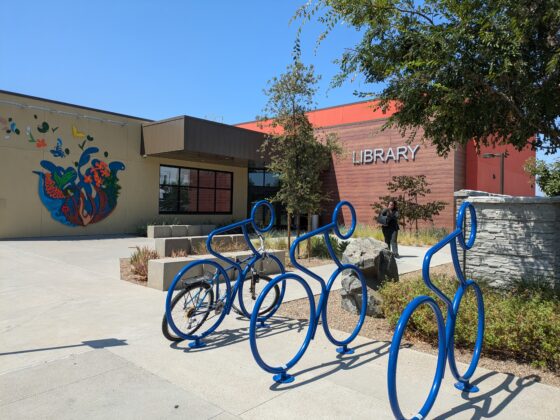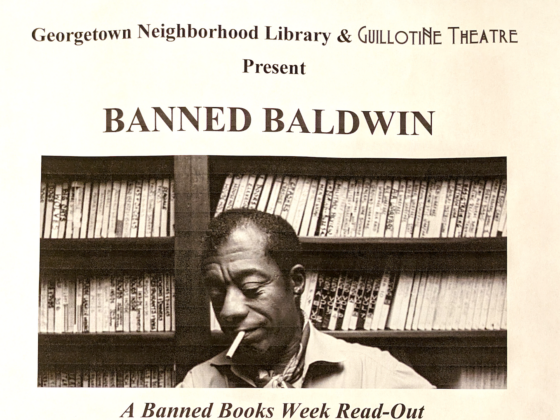If you could ask Ben Franklin what public institution he would like to visit in America today, I bet he would say the public library. And if you asked him which part of the library, I bet he would say the makerspace.
Billy Friedele and Mike Iacovone won the competition. Billy and Mike are artists, teachers and friends, and together they started the Free Space Collective, an arts effort that is all about engaging people with their public spaces, via art.

On my second trip to the Fab Lab, Billy was experimenting with transforming a photograph into a 3-D object. He was trying out the software and hardware systems that begin with a series of photos he made of a plant in a planter, and turning out an actual, miniature 3-D replica. The magic happens in photographing the object in 360-degrees, including from the top and the bottom, and sending that information to the 3-D printer to do its work. While we talked, the printer was patiently exuding the plastic fed from a spool of wire through a tiny pencil-like nib, onto the platform inside the small oven-looking printer. It was deep purple, Billy’s choice.

Billy and Mike have been focusing on different ways for people to look at their cities. The 3-D printing was a first step in speaking to the concept. The simple task that day was to take a familiar object you see around you, like a crunched-up soda can lying on the street, and inspire a new look at it. This was experimental, and who knows where it might lead. To an artist or even a non-artist like me, I say take a leap of faith here; Ben Franklin did. Every maker does, from the sophisticated technologist to the craftsy dabbler.
As part of the agreement for being makers-in-residence, the pair conducts community workshops at some of the libraries. I decided to attend one last fall. About a dozen folks from the neighborhood showed up on a Saturday afternoon for a project they were calling “Walking as Drawing.”
We would create input for a collective work of art. We would all walk for about 45 minutes, starting and ending at the library, and trace our paths either on our phone app, or the old-fashioned way, by hand on printed street maps of the neighborhood. The only rule was to stick to public spaces (read: don’t cut through people’s yards). They encouraged us to store up impressions of what we noticed or felt along the way. We would reconvene to share our experiences and turn in our personal maps. Then, Mike and Billy would turn our group walks into digital art. Have a look here.
I must admit, I was surprised to experience my familiar neighborhood with new eyes and ears. I hadn’t noticed a pop-up park along a street that I probably drive several days a week. Others were surprised at the sounds they heard—the trucks, the kids. We noticed the density of community spaces—besides the library, there was the elementary school, the middle and high schools, the church, the assisted living center, the public swimming pool, and more.
I would say that if the mission was to bring folks in the community together, to ask them to look at their neighborhood in a closer, different way, and to report back to share, then they completely succeeded. They produced this within the framework of art, and art they did produce.
Here is more of Billy’s work and Mike’s work.




